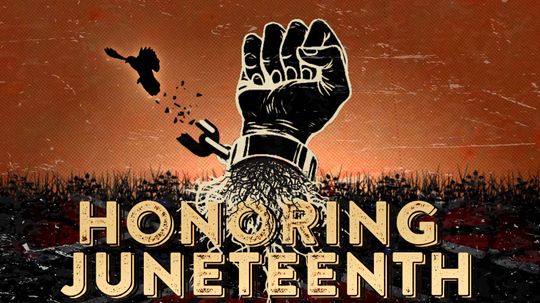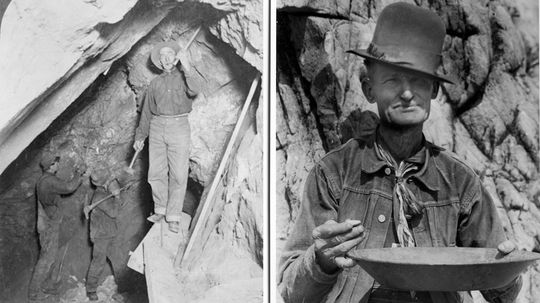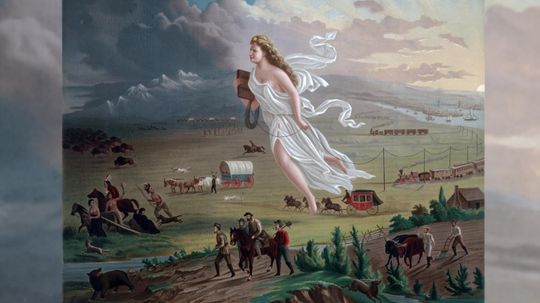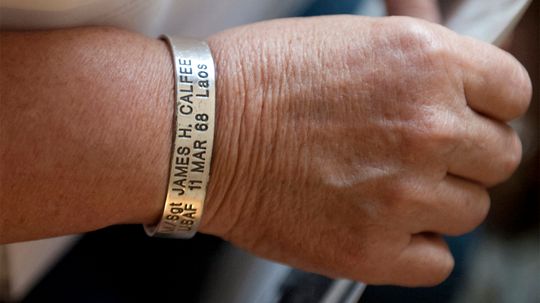North American History
From the southern tip of Florida to the Alaskan wilderness, explore North American history in-depth in the North American history section.
Learn More / Page 4
The residents of the U.S. capital pay taxes, serve in the armed forces and contribute to America's economic strength but have no voting representation in Congress. Many Democrats want to change that.
The Wild West is the stuff of legends, lore and awesome John Wayne movies. How much do you know about the days of saloons and standoffs?
By Alia Hoyt
The Emancipation Proclamation may have signified the formal end of slavery. But almost immediately afterward, Southern states enacted Black Codes that effectively re-enslaved thousands of newly freed Black people.
By Dave Roos
Advertisement
The Greenwood District of Tulsa, Oklahoma, aka "Black Wall Street" was one of the wealthiest African American neighborhoods in the U.S. But in 1921 it was the site of the worst race massacre in U.S. history.
By John Donovan
Though it's been around for more than 150 years, Juneteenth was still a mystery to many. But now, it's the newest federal holiday in the U.S.A.
By John Donovan
The historic period of the Harlem Renaissance hit its height a century ago, but its influence has continuously impacted American culture through the decades.
When you think of the California Gold Rush, you probably think a lot of people made millions off that gold, right? Some did, but it wasn't from panning for it.
By Oisin Curran
Advertisement
The U.S. Capitol is one of the most architecturally impressive buildings in the world. And how its design was chosen is quite a story.
By John Donovan
Why not the Big Kumquat or the Big Banana? New York's fruity moniker actually had its beginnings in the sports pages and jazz clubs of the 1920s.
Most Americans can at least recite the phrase about "life, liberty and the pursuit of happiness." But what else is inside this document? And what was left out?
By Dave Roos
It's been 101 years since the 19th Amendment to the Constitution was ratified. Why did it take so long for women to get the right to vote in the United States?
Advertisement
The Boston Massacre didn't start the American Revolution. But the events that unfolded on March 5, 1770, helped cement the idea that the relationship between England and its colonies was permanently broken.
By John Donovan
Lots of U.S. states have nicknames, but Missouri's flinty moniker arguably is one of the best.
What makes the American Revolution stand out in world history? Was it the introduction of guerrilla warfare or its stage outside the borders of its parent nation? All those were noteworthy, but the real revolution was what the Revolution created.
By Josh Clark & Dave Roos
After the Civil War, the United States was still a country divided. And the history of a monumental piece of artwork that resides in Atlanta shows how even art was used to rewrite the narrative of the war.
By Ray Glier
Advertisement
The early American philosophy known as Manifest Destiny was a doctrine that espoused that God wanted Americans to take over the continent.
By John Donovan
Back in the early 1970s, two college coeds had the idea to create bracelets for sale to the public as a means of keeping imprisoned U.S. soldiers alive in the hearts and minds of the public. This is the story.
Hundreds were killed in the infamous 1942 Cocoanut Grove fire in Boston. But from the tragedy came advancements in everything from building codes and medical treatments that are still in place today worldwide.
By John Donovan
The first framework for the government of the United States was the Articles of Confederation, written in 1777 and ratified in 1781, which set up a relatively weak central government without federal courts or even the power to levy taxes.
Advertisement
Jim Crow was about much more than laws enacted to suppress blacks. It was about a system involving politics, economics, social and cultural practices. And while the laws may be dead, Jim Crow is not.
By John Donovan
It's hard to sum up something as big as a state in just a few words, but that doesn't stop them from trying! What does it mean to be from the 'Show-Me' state or to be a Sooner? Find out how vast your state nickname knowledge is with our quiz!
By Alia Hoyt
This infamous gun battle in Tombstone, Arizona lasted just 30 seconds. But its legend, and America's obsession, has endured for more than a decade.
By John Donovan
The African American servicemen known as "Buffalo Soldiers" are the subjects of both history and legend, but what is truth and what is lore?
By John Donovan
Advertisement
Hundreds of thousands of emigrants traveled the 2,170-mile Oregon Trail in search of a better life. And thousands of them were injured - and even died - on the journey along the way.
By Mark Mancini
Devil's Den was the site of the bloodiest battle of the American Civil War. Not surprisingly, it's rumored to be haunted with the ghosts of many dead soldiers.
By Dave Roos
























